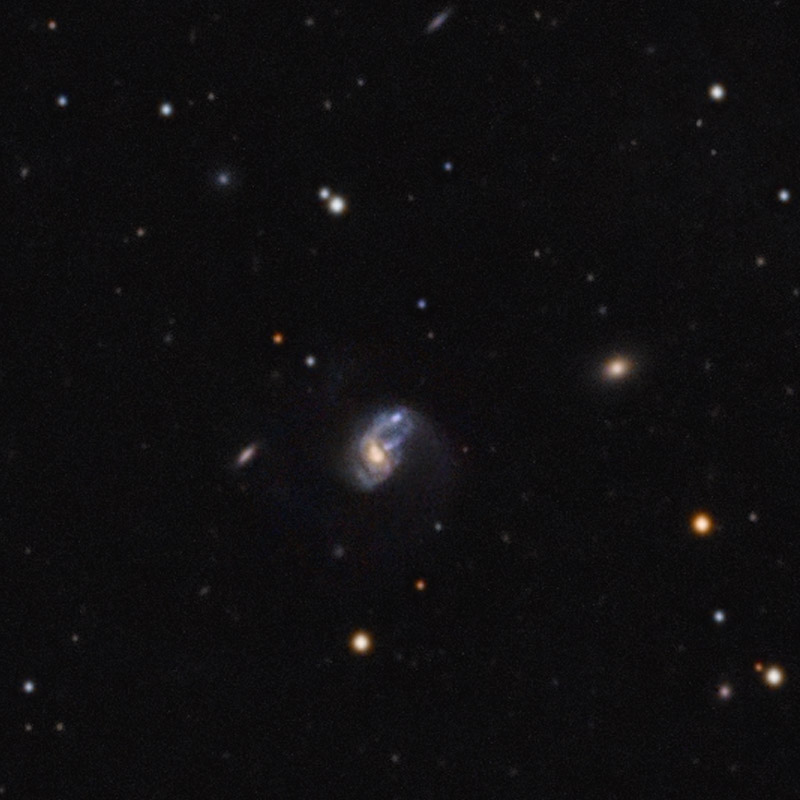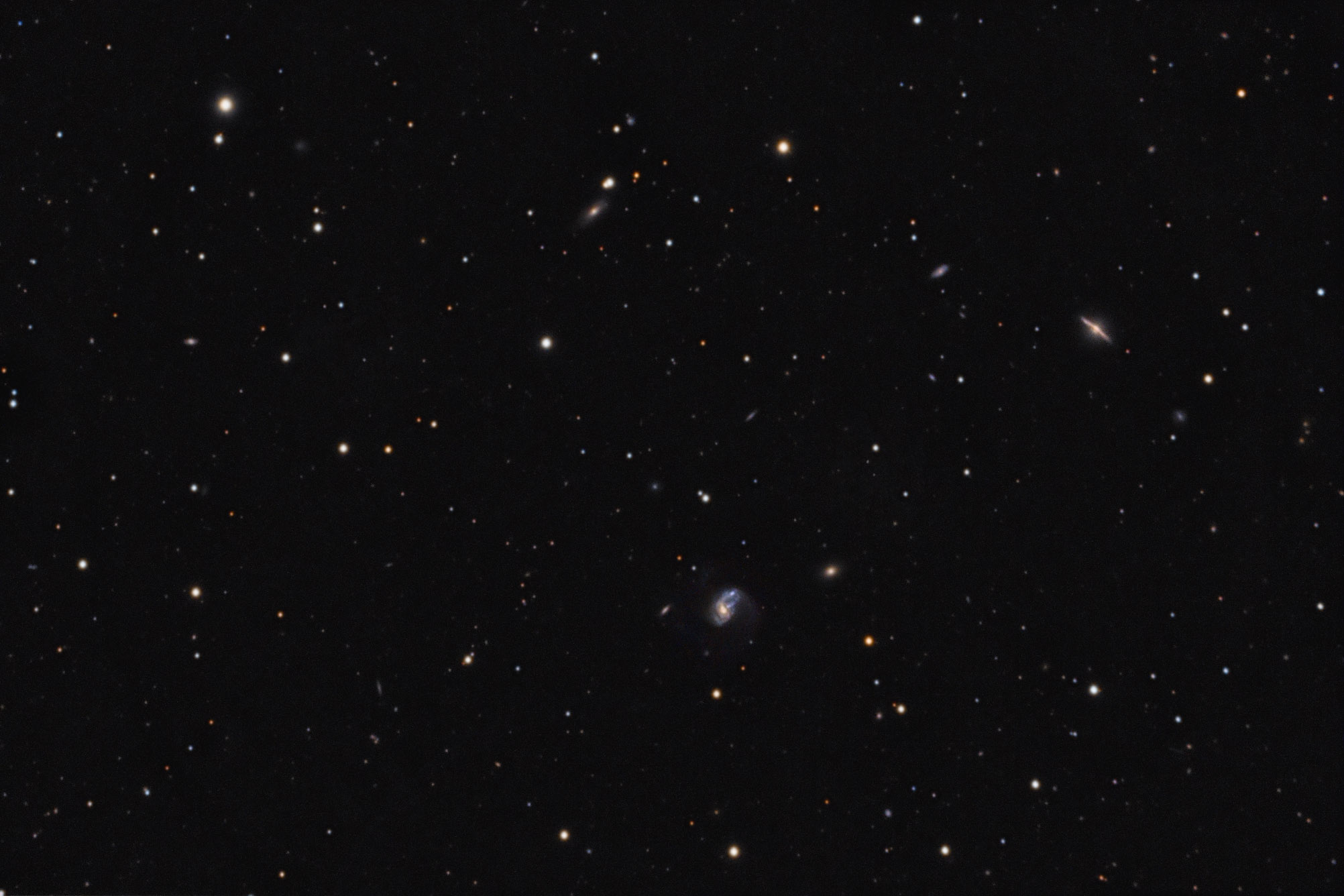| Description | Images |
Object name: ARP075Designation(s): ARP075, Arp 75/NGC 702 is possibly an interacting pair of galaxies in central Cetus about 465 million light-years distant. Arp put it in his category for spirals with high surface brightness companions on the arms. As to what constitutes his companion, I'm not sure. At first, I thought he meant the very blue star cloud in the northern arm. But his comment reads: "Very faint extension to companion." That would rule out the blue object. About all that is left is the galaxy to the left, one and a half minutes left. A small oval galaxy. The rather blue extension is really a huge faint plume that envelops a much larger area than the bright parts of the galaxy. It would seem just happenstance that this other galaxy is within this large faint disk. NED shows the blue star cloud-like object well within the brighter portions of the galactic tangle as having virtually the same redshift as the main galaxy. So it is likely related. No redshift data is available for the one at the eastern edge of the faint star plume, APMUKS(BJ) B014853.58-041809.1. It likely lies far beyond or is a dwarf much closer. All speculation without redshift data. It appears this is an interacting system, just not the one Arp describes. The other galaxy may be the blue object or maybe the double core some sources mention. Maybe it's a triple system. It does seem to have an odd dark lane to the west (right) of the brightest core region and another parallel dust lane on the opposite side of the double core that is somewhat further from the core. The other "major" galaxy near Arp 75 is APMUKS(BJ) B014836.83-041711.8 to the west. Again, no redshift data but I doubt it is related. Related Designation(s):AKARI J0151192-040307, APMUKS(BJ) B014847.54-041802.9, ARP 075, ARP075, GSC 4688 00459, IRAS 01487-0418, IRAS F01487-0418, MCG -01-05-043, NGC 0702, NVSS J015118-040314, PGC 006852, VLG 0148-0418, VLG 046, [WB92] 0148-0418, |

